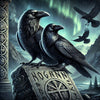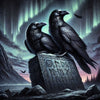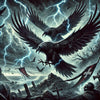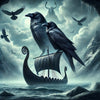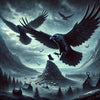What Makes Fenrir One of the Most Fascinating Beasts in Norse Legends?
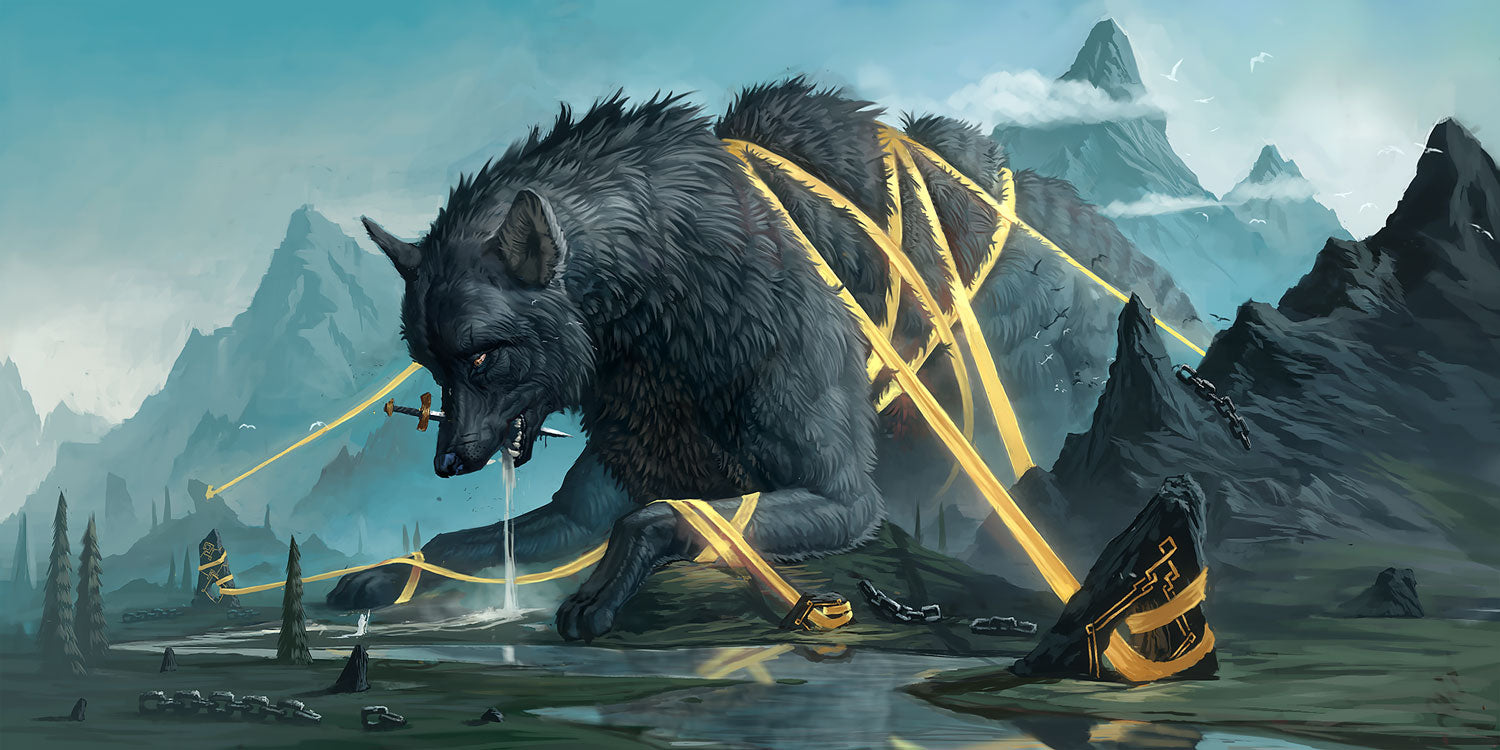
In the vast world of Norse mythology, there are few creatures as captivating, fearsome, or as richly symbolic as Fenrir, the giant wolf who is fated to play a pivotal role in the end of the world. Often portrayed as one of the mightiest and most terrifying figures in Norse lore, Fenrir is not just another mythical creature; he is a force of raw power and rebellion that captures the imagination of people even today. Unlike other beasts of mythology, Fenrir isn’t bound to serve the gods; instead, he embodies a challenge to their control, a symbol of untamed strength that refuses to be tamed. His story is woven with themes of prophecy, betrayal, and fate, making Fenrir a complex and intriguing character whose story has stood the test of time. So, what makes Fenrir so fascinating, and why has he continued to inspire awe and respect throughout centuries? Let’s dive into his origins, his symbolic meaning, and the incredible legacy he has left on Viking lore and beyond.
Who Is Fenrir, the Mighty Wolf of Norse Mythology?
Fenrir’s story begins with his lineage. He is the offspring of Loki, the god known for his trickery and shape-shifting abilities, and Angrboda, a giantess from Jotunheim. Together, they produced three powerful children: the Midgard Serpent, Hel, and Fenrir. Each of these children posed a unique threat to the gods of Asgard, but Fenrir was, by far, one of the most fearsome among them. From the time he was born, Fenrir exhibited signs of extraordinary strength and size, growing faster and stronger than anyone could have anticipated. The gods, particularly Odin, saw him as a looming danger, a creature that would one day be impossible to control. The more they tried to contain him, the more powerful Fenrir became, symbolizing a strength that cannot be bound by fear or force.
Fenrir’s presence in Asgard was tolerated initially, but as he continued to grow, the gods could no longer ignore the threat he posed. They knew they couldn’t allow Fenrir to roam free, yet they feared the consequences of attempting to bind him. The gods, in their wisdom, devised a plan to trick Fenrir into being chained under the guise of testing his strength. They tried various chains, each stronger than the last, but Fenrir broke through every one of them with ease. It wasn’t until they crafted Gleipnir—a magical ribbon forged by dwarves and made from impossible materials like the sound of a cat’s footfall and the roots of a mountain—that they were able to restrain him. Even then, Fenrir was suspicious, demanding that one of the gods place a hand in his mouth as a sign of trust. Tyr, the god of war, bravely stepped forward, and as the chain held, Fenrir bit off Tyr’s hand in a final act of defiance.
What Role Does Fenrir Play in the Ragnarok Prophecy?
The prophecy of Ragnarok, the Norse end of the world, is where Fenrir’s role becomes truly legendary. According to the prophecy, Fenrir is fated to break free from his bonds at the dawn of Ragnarok. When this happens, he will join forces with other giants and monstrous beings to bring about the destruction of the gods. Fenrir’s wrath is unparalleled; he is said to grow so large that his mouth will stretch across the sky, consuming everything in his path, including Odin himself. This epic battle is seen as both a literal and symbolic conflict between the forces of order and chaos, with Fenrir representing the wild, uncontrollable aspects of nature and fate that even the gods cannot suppress.
What makes Fenrir’s role in Ragnarok even more intriguing is how he serves as both a catalyst and a symbol for the inevitability of change and destruction. The gods, despite their power, are unable to change their fate. Fenrir, in his strength and ferocity, represents the forces of nature that are beyond human control—those aspects of life that, like death and rebirth, are part of an endless cycle. By embracing his fate, Fenrir doesn’t just bring about the end; he also opens the door to a new beginning. This balance of destruction and renewal is a central theme in Norse mythology, making Fenrir a powerful reminder of the cycles that govern all life. To explore how these mythological themes have influenced today’s culture, take a look at our article on How Norse Mythology Influenced Popular Culture.
What Does Fenrir Symbolize in Norse Mythology?
More than just a menacing beast, Fenrir’s story carries deep symbolic weight. In Norse culture, Fenrir embodies the raw power of nature, the kind of force that can’t be contained by mere human or godly constraints. His immense strength and refusal to be controlled reflect a primal energy, the type of power that exists beyond good and evil. Fenrir’s struggle with the gods represents the tension between order and chaos, a reminder that both elements are necessary to the natural balance of the world. While the gods of Asgard represent structure, control, and the enforcement of law, Fenrir stands for freedom, resistance, and the inevitable power of nature that defies even the mightiest chains.
Interestingly, Fenrir also represents the concept of fate. His actions are not purely driven by malice but rather by his destiny, a fate sealed by the gods themselves. In binding him, the gods set into motion the very events they sought to prevent. This paradox of fate and free will is a recurring theme in Norse mythology and one that resonates strongly with those who see Fenrir as a symbol of inner strength and resilience. To learn more about how Fenrir and other symbols shaped the Viking worldview, check out our article Vikings: A Look into the Lives of the Legendary Warriors.
Fenrir’s Lasting Legacy and Influence
Fenrir’s legend has lived on for centuries, and his story continues to inspire and intrigue people worldwide. From literature and art to modern pop culture, Fenrir’s image as the untamable wolf who defies the gods has become iconic. In many ways, he represents the rebel spirit, the side of us that refuses to be confined by rules or expectations. People who are drawn to the story of Fenrir often see in him a reminder of their own strength and independence—a symbol of power that cannot be contained. Fenrir’s resilience, his acceptance of fate, and his willingness to stand against the odds make him a character that resonates deeply with those who value strength and freedom.
At Odin’s Glory, we honor this powerful symbol through our Fenrir Viking Wolf Jewelry Collection. Each piece in this collection captures the essence of Fenrir, allowing you to carry a symbol of strength, resilience, and untamed power with you. Whether you’re looking for a pendant, ring, or bracelet, our Fenrir collection lets you connect with the wild spirit of this legendary wolf and embrace the qualities he represents.
Conclusion
So, what makes Fenrir one of the most fascinating beasts in Norse legends? It’s his unmatched strength, his defiance of the gods, and the symbolic weight he carries as a representation of fate and freedom. Fenrir’s story reminds us that even the greatest forces can’t always be controlled, and sometimes, embracing our inner wildness is the key to understanding our own power. If Fenrir’s legend speaks to you, explore our Fenrir Viking Wolf Jewelry Collection at Odin’s Glory, and carry a piece of this awe-inspiring beast with you as a reminder of resilience and strength.
